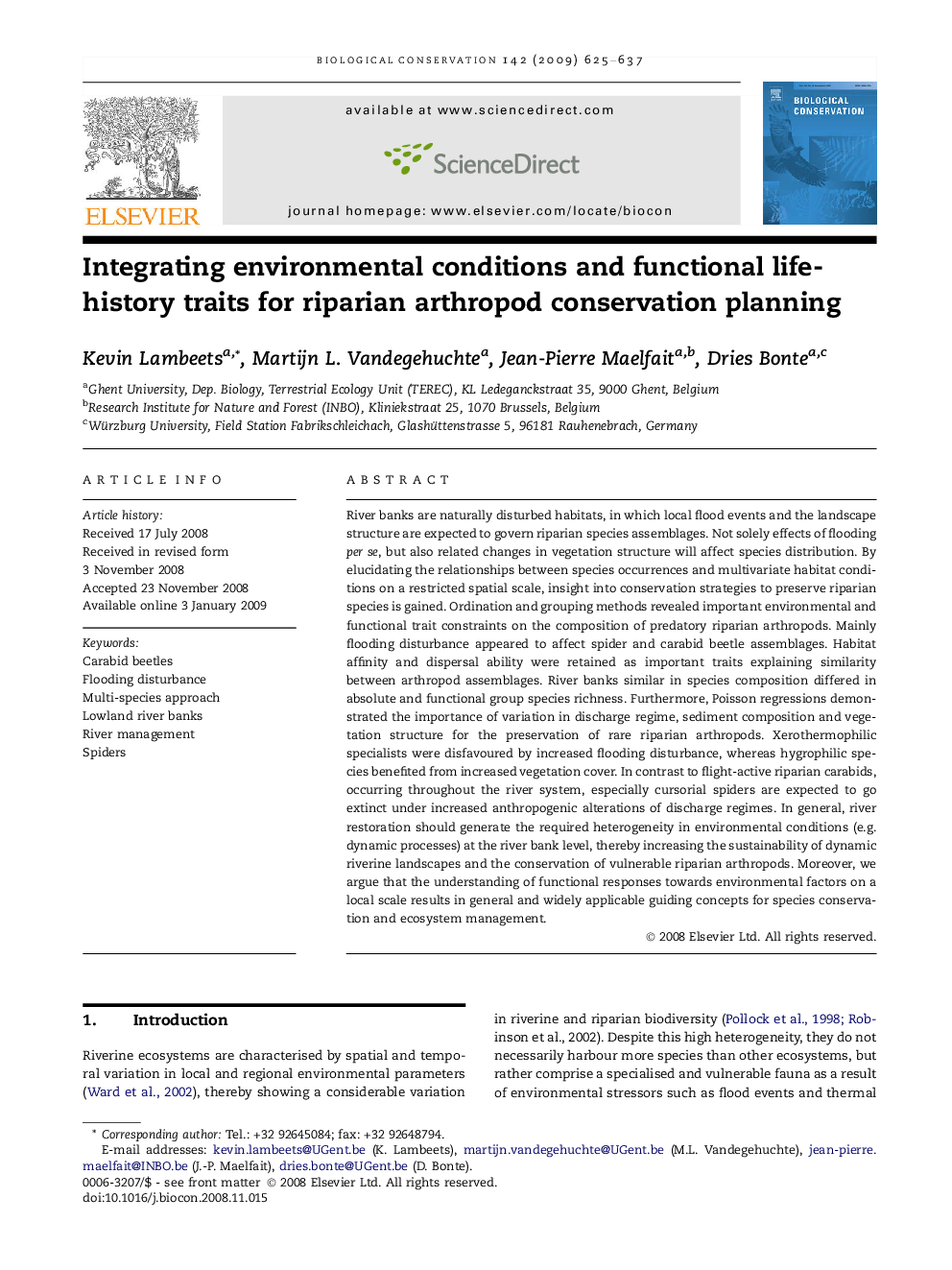| کد مقاله | کد نشریه | سال انتشار | مقاله انگلیسی | نسخه تمام متن |
|---|---|---|---|---|
| 4386448 | 1304566 | 2009 | 13 صفحه PDF | دانلود رایگان |
عنوان انگلیسی مقاله ISI
Integrating environmental conditions and functional life-history traits for riparian arthropod conservation planning
دانلود مقاله + سفارش ترجمه
دانلود مقاله ISI انگلیسی
رایگان برای ایرانیان
موضوعات مرتبط
علوم زیستی و بیوفناوری
علوم کشاورزی و بیولوژیک
بوم شناسی، تکامل، رفتار و سامانه شناسی
پیش نمایش صفحه اول مقاله

چکیده انگلیسی
River banks are naturally disturbed habitats, in which local flood events and the landscape structure are expected to govern riparian species assemblages. Not solely effects of flooding per se, but also related changes in vegetation structure will affect species distribution. By elucidating the relationships between species occurrences and multivariate habitat conditions on a restricted spatial scale, insight into conservation strategies to preserve riparian species is gained. Ordination and grouping methods revealed important environmental and functional trait constraints on the composition of predatory riparian arthropods. Mainly flooding disturbance appeared to affect spider and carabid beetle assemblages. Habitat affinity and dispersal ability were retained as important traits explaining similarity between arthropod assemblages. River banks similar in species composition differed in absolute and functional group species richness. Furthermore, Poisson regressions demonstrated the importance of variation in discharge regime, sediment composition and vegetation structure for the preservation of rare riparian arthropods. Xerothermophilic specialists were disfavoured by increased flooding disturbance, whereas hygrophilic species benefited from increased vegetation cover. In contrast to flight-active riparian carabids, occurring throughout the river system, especially cursorial spiders are expected to go extinct under increased anthropogenic alterations of discharge regimes. In general, river restoration should generate the required heterogeneity in environmental conditions (e.g. dynamic processes) at the river bank level, thereby increasing the sustainability of dynamic riverine landscapes and the conservation of vulnerable riparian arthropods. Moreover, we argue that the understanding of functional responses towards environmental factors on a local scale results in general and widely applicable guiding concepts for species conservation and ecosystem management.
ناشر
Database: Elsevier - ScienceDirect (ساینس دایرکت)
Journal: Biological Conservation - Volume 142, Issue 3, March 2009, Pages 625-637
Journal: Biological Conservation - Volume 142, Issue 3, March 2009, Pages 625-637
نویسندگان
Kevin Lambeets, Martijn L. Vandegehuchte, Jean-Pierre Maelfait, Dries Bonte,